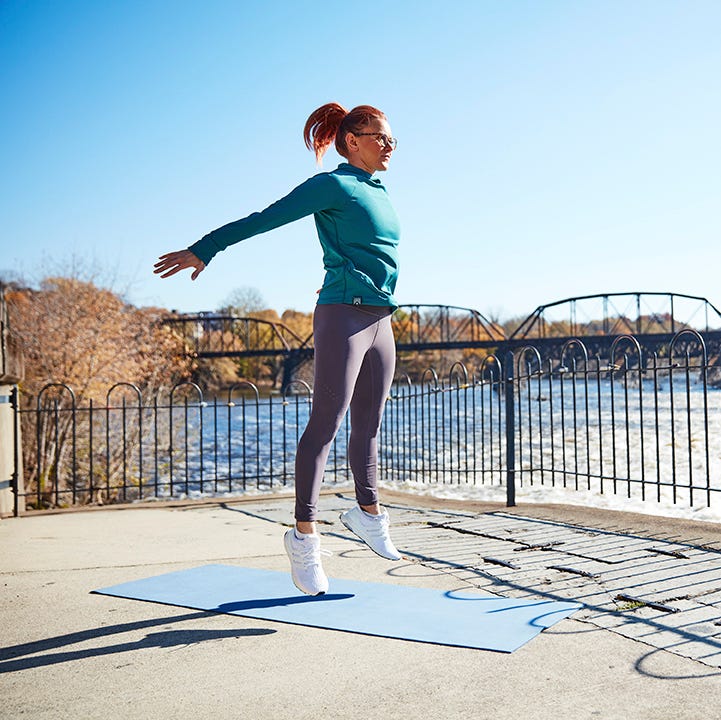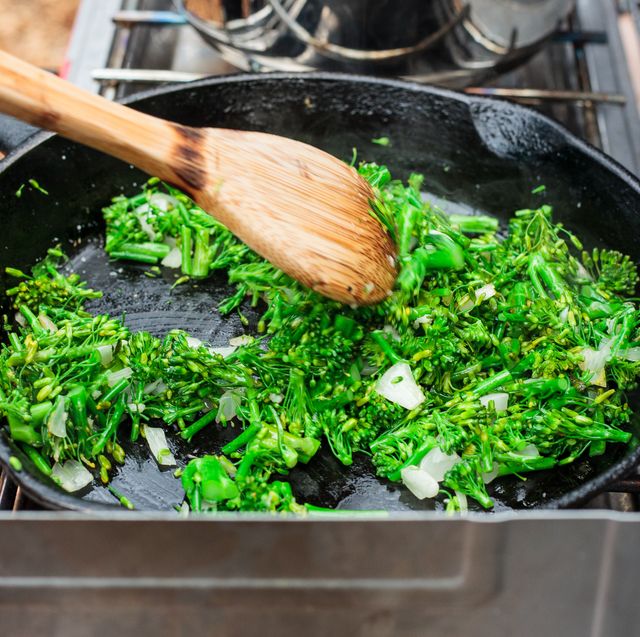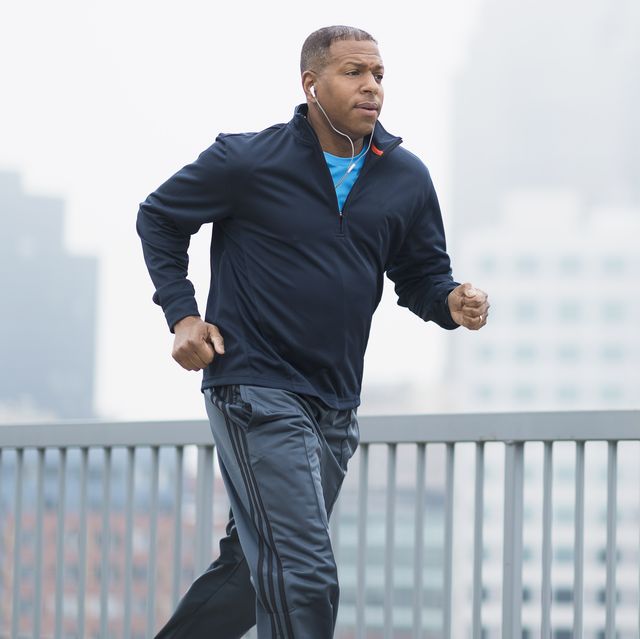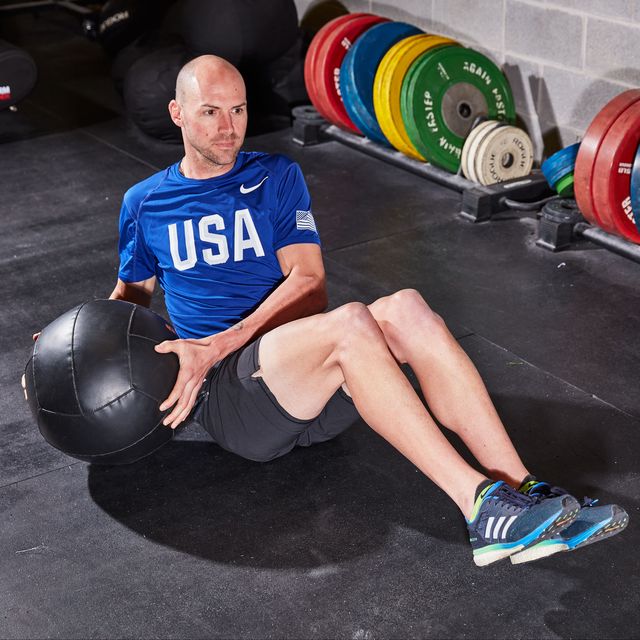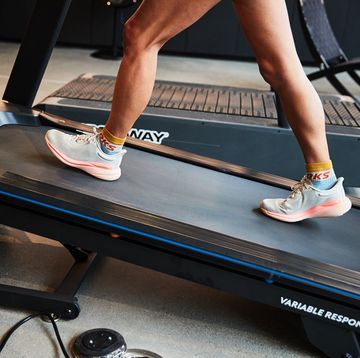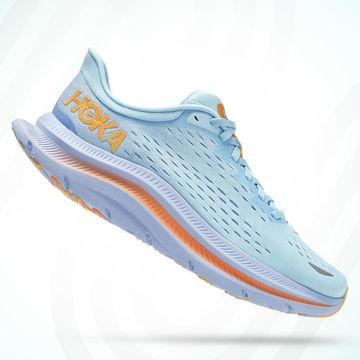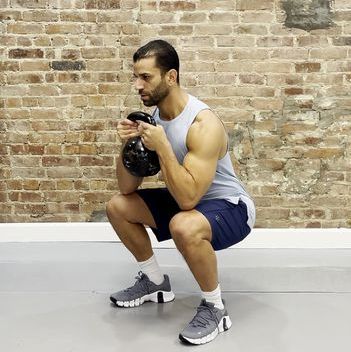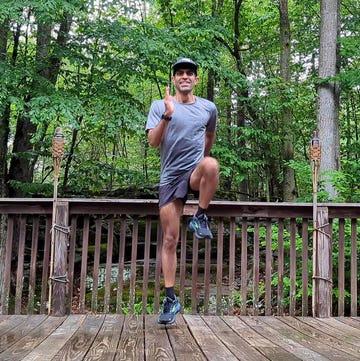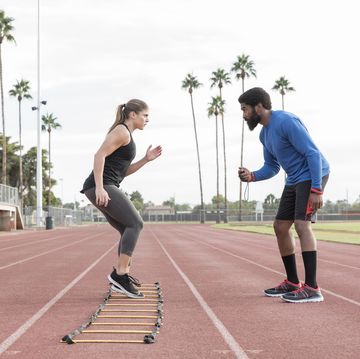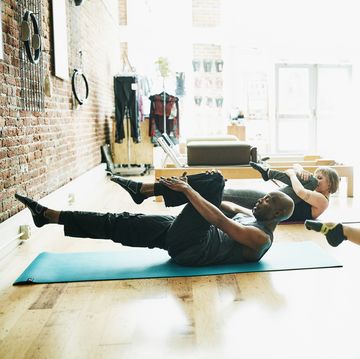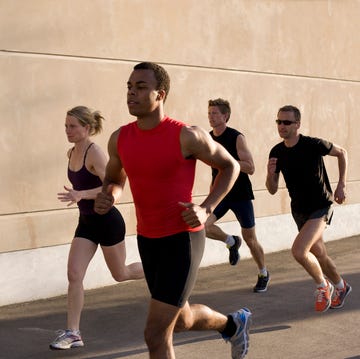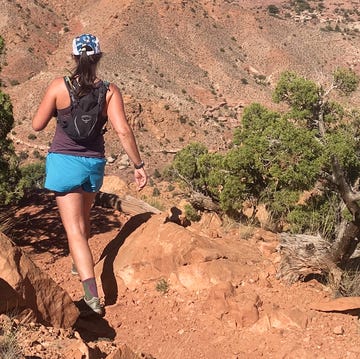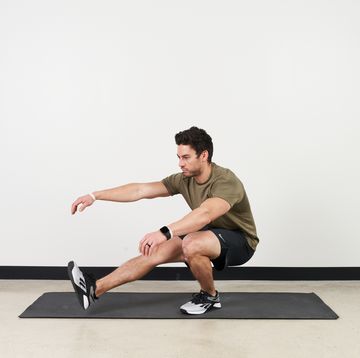- New research says doing short bouts of plyometric exercises, like hops, can help improve running economy.
- Researchers also say runners can safely practice five minutes of plyometrics each day without developing overuse injuries.
If you’re looking to improve your running performance, then it’s best to hop to it, according to new research.
While previous studies have demonstrated that plyometric (jumping) exercises, like squat jumps or box jumps, help runners improve power, speed, and running economy, many of those studies looked at elite runners. Now, new research published in Scientific Reports found practicing just five minutes of hopping each day can help improve running economy in amateur athletes.
Runners of all different training levels practice this form of high-impact training, not just the elites, “therefore, we wanted to know if one of the frequently used interventions [hopping] is feasible to improve running economy in amateurs without a risk for overuse or injuries,” said Tobias Engeroff, Ph.D., lead study author, and head of the health and performance division at the Institute of Occupational Medicine, Social Medicine, and Environmental Medicine at Goethe University in Frankfort, Germany.
More From Runner's World

To find out, for six weeks, researchers studied 34 amateur runners (27 males and 7 females), all younger than 40 years old, who could run a 10K in less than 55 minutes. Participants were randomly divided into two groups—a hopping group, and a controlled group. Both groups of runners maintained their regular exercise routine, but the hopping group practiced various sets of hops for five minutes each day.
For the first week, participants completed five sets of hops for 10 seconds each, with 50 seconds of rest between each set. Then each week after, runners added an additional set of hops and cut back their rest times by 10 seconds to maintain a total training time of five minutes.
When hopping, runners were instructed to stand with both feet no more than hip-width apart, and to hop as high as possible using both legs. To maximize ground reaction time—the time between the moment your foot leaves the ground and touches back down—runners were also instructed to jump with both legs either extended or slightly bent.
In the end, only one runner reported an injury (shin pain), so researchers concluded that runners can safely implement a daily plyometric training regime of five minutes over the course of six weeks without developing overuse injuries.
Also, because the participants showed changes in oxygen uptake and carbon dioxide exhalation, researchers concluded that the plyometric exercise could improve running economy, said Engeroff. Though a complex measurement, running economy basically defines how efficiently your body can use oxygen to energize your muscles, which ultimately affects your performance, including speed.
One potential mechanism for this performance-boosting reaction is an increase in tendon stiffness. “The idea behind this is that stiffer tendons are more capable of transferring energy from the working muscle to the joint movement,” said Engeroff. It isn’t clear if this is the mechanism that could have led to a change in running economy, but it may support the benefits of plyometrics. (Engeroff does say we need more research to confirm the benefits of hopping and the exact mechanisms behind the advantages.)
One key to gaining benefits from a hopping practice: progression. “Our data indicates that exercises, like plyometrics and hopping, are likely to increase running economy. It is, however, very important that such exercises are done properly,” said Engeroff. This means, if you use plyometrics to complement your training, you should start conservatively. Beginners should start with short bouts of exercise with larger rest periods in between and progress from there, Engeroff said.

Monique LeBrun joined the editorial staff in October 2021 as the associate health and fitness editor. She has a master’s degree in journalism and has previously worked for ABC news and Scholastic. She is an avid runner who loves spending time outside.
